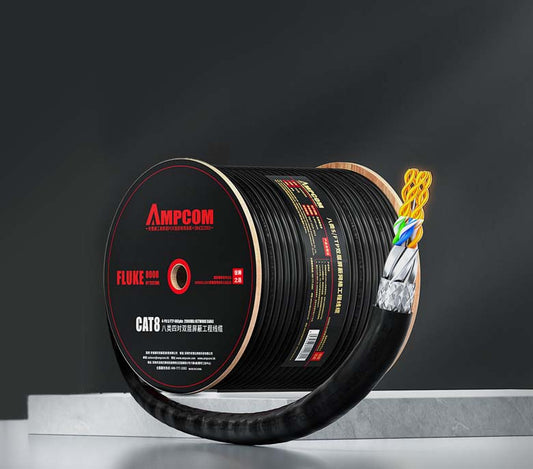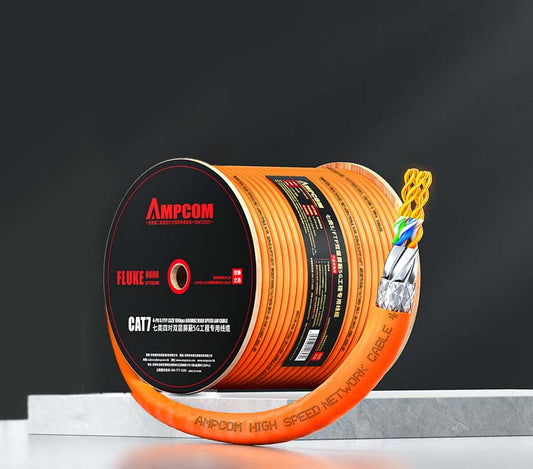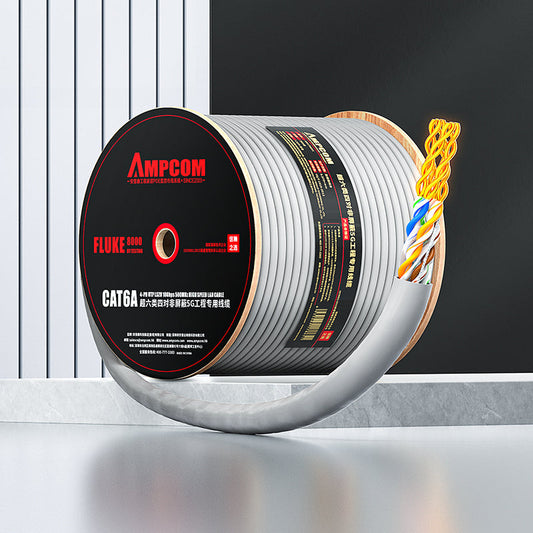AOC vs DAC Cables: The Practical Buyer’s Guide for High-Speed Data Centers
If you’re designing or refreshing a high-speed data center fabric, the choice between AOC and DAC is not a minor footnote—it will shape your power budgets, airflow efficiency, rack density, and long-term scalability. What really matters isn’t whether the link comes up on day one, but whether it keeps performing when racks get hotter, cabling paths become crowded, and future upgrades demand two or four times today’s bandwidth. The smarter way to think about cabling is as part of the platform itself rather than a consumable accessory—make the right call early, and you’ll avoid costly surprises later on.
Let’s start with passive DAC. It’s twinax copper with direct-attach ends, simple and brutally effective for short hops. Inside a rack or between adjacent racks, passive DAC keeps latency minuscule, draws essentially no power, and is hard to beat on cost per link. For ToR server uplinks and short switch-to-switch runs, DAC delivers predictable performance without adding points of failure. The trade-offs are physical: copper is thicker, heavier, and stiffer, so tight turns in dense cable managers can be a wrestling match, and as speeds rise, practical reach shrinks—at 100G you’re often planning around ~3–5 meters, with 7 meters as an upper limit only in friendly conditions.
AOC goes in the opposite direction: lightweight multimode fiber with integrated optics in the ends. You pay a bit more and you’ll budget a watt or two per end, but you win on reach, cable handling, and signal integrity. AOCs cruise past in-row limits to comfortable rack-to-rack distances (tens of meters, commonly up to ~100 m depending on SKU), shrug off EMI in noisy rooms, and make airflow and dressing easy thanks to sleek 2–3 mm jackets. In leaf-spine designs where rows aren’t back-to-back or where storage lives across the aisle, AOC’s headroom simplifies layout and avoids the “we’re 1 meter short” headache that plagues copper at higher data rates. If you’re mapping hybrid HPC or AI pods with fast east-west traffic, a well-planned pool of high-reach AOC interconnects keeps the design flexible without re-terminations.
Performance wise, there’s no mystery. Passive DAC shines at ultra-short, ultra-low-latency links with the lowest BOM cost and essentially zero link-level power. AOC offers stable eye diagrams over longer runs, cleaner margins in high-EMI bays, and consistently lower rework because cable routing is civilized. Where teams get into trouble is mixing distance, gauge, and panel density without planning: a bundle of 24-AWG DACs might pass signal just fine, yet still fail the “can we actually close the door” test. That’s not a signal problem—it’s an operations problem. If your racks are already at capacity, favoring AOC for anything beyond the first few meters can reclaim space and improve serviceability.
| Feature | Passive DAC Cable | Active Optical Cable (AOC) |
|---|---|---|
| Reach | Up to ~7 m (often ~3–5 m at 100G) | Commonly tens of meters, up to ~100 m (SKU-dependent) |
| Medium | Twinax copper | Multimode fiber |
| Power Consumption | ≈0 W at the link (device-side only) | ≈1–2 W per end |
| Flexibility & Handling | Thicker/heavier; tighter bends are harder | Lightweight; 2–3 mm jacket; easy routing |
| EMI Immunity | Susceptible (electrical signal) | Immune (dielectric fiber) |
| Cost Profile | Lowest per-link for short runs | Higher per-link, offsets with longer reach & easier installs |
| Best Use | Intra-rack / adjacent-rack, ToR uplinks | Rack-to-rack, across aisles, EMI-heavy bays |
Cost and TCO deserve a sober look. On day one, passive DAC is cheaper, full stop. But cabling costs don’t live in a vacuum; add the price of airflow baffles, deeper managers, and extra labor time when copper dressing gets tight. Add the power delta for AOC, but subtract the time you don’t spend ripping and re-running links to gain another meter or to clean up a congested pathway. At scale, the “cheapest link” isn’t always the “cheapest network.” Many operators land on a blended model: passive DAC inside the rack, AOC for row-to-row and anything that crosses hot aisles, which often yields the lowest overall friction for installs and MACs.
Compatibility is straightforward when you standardize on proven optics and copper SKUs across SFP+/SFP28/QSFP+ and QSFP28. Breakout use cases are where cabling can quietly make or break timelines: 40G→4×10G and 100G→4×25G are routine, but pay attention to switch port modes, firmware, and labeling. Good labels and color discipline matter more than anyone wants to admit when you’re carrying four lanes in one jacket. If you’re scaling a new pod, a small pilot with your exact switches, NICs, and trays—using the final cables, not lab one-offs—will flush out any quirks before the big cutover. A simple, documented scheme for QSFP28 to SFP28 breakouts pays dividends in week two when the first move-add-change ticket lands.
Reliability comes down to environment. Copper carries electrical signals and can be cranky around big PSUs, RF sources, and densely packed power whips; fiber is a dielectric and doesn’t care. If you’re sharing trays with high-current lines or riding above a chatty test bay, AOC will be calmer. On the flip side, DAC tolerates more mishandling; if a tech kneels on a copper whip, you’re unlikely to shatter a glass core. Train for both: strain-relief clips for DAC to protect paddles and latches, and bend-radius guards for AOC to keep those tight runs honest.
Planning for tomorrow? If 100G today becomes 200/400G in the next refresh, AOC gives you more runway for the same pathways and tray space, while passive DAC will likely stay a short-hop specialist. That doesn’t make DAC “legacy”—it makes it the right tool for the job. Keep it close to the switch, keep runs short, and you’ll enjoy the lowest power and latency on the floor. Use AOC where topology, density, or EMI say so, and you’ll avoid late-stage redesigns. For buyers, the simplest rule is: model the distances, model the thermal, and buy to the map, not the wish list. A small buffer of rack-to-rack AOC jumpers on the shelf can save a Saturday.
Bottom line: choose passive DAC for short, inexpensive, ultra-low-power server uplinks and intra-rack switch links; choose AOC for longer, cleaner, easier-to-route connections across or between rows. Both keep latency low and throughput high when used where they fit best. Standardize SKUs, pilot your breakouts, and document everything. Do that, and cabling stops being a constraint and starts acting like an enabler for the rest of your stack—whether you’re wiring classic leaf-spine or a GPU-heavy AI pod. If you want a starting bill of materials for your layout, AMPCOM helps you simplify complex cabling distances and port planning into a practical pull list, from cost-effective DAC to flexible AOC interconnects.



